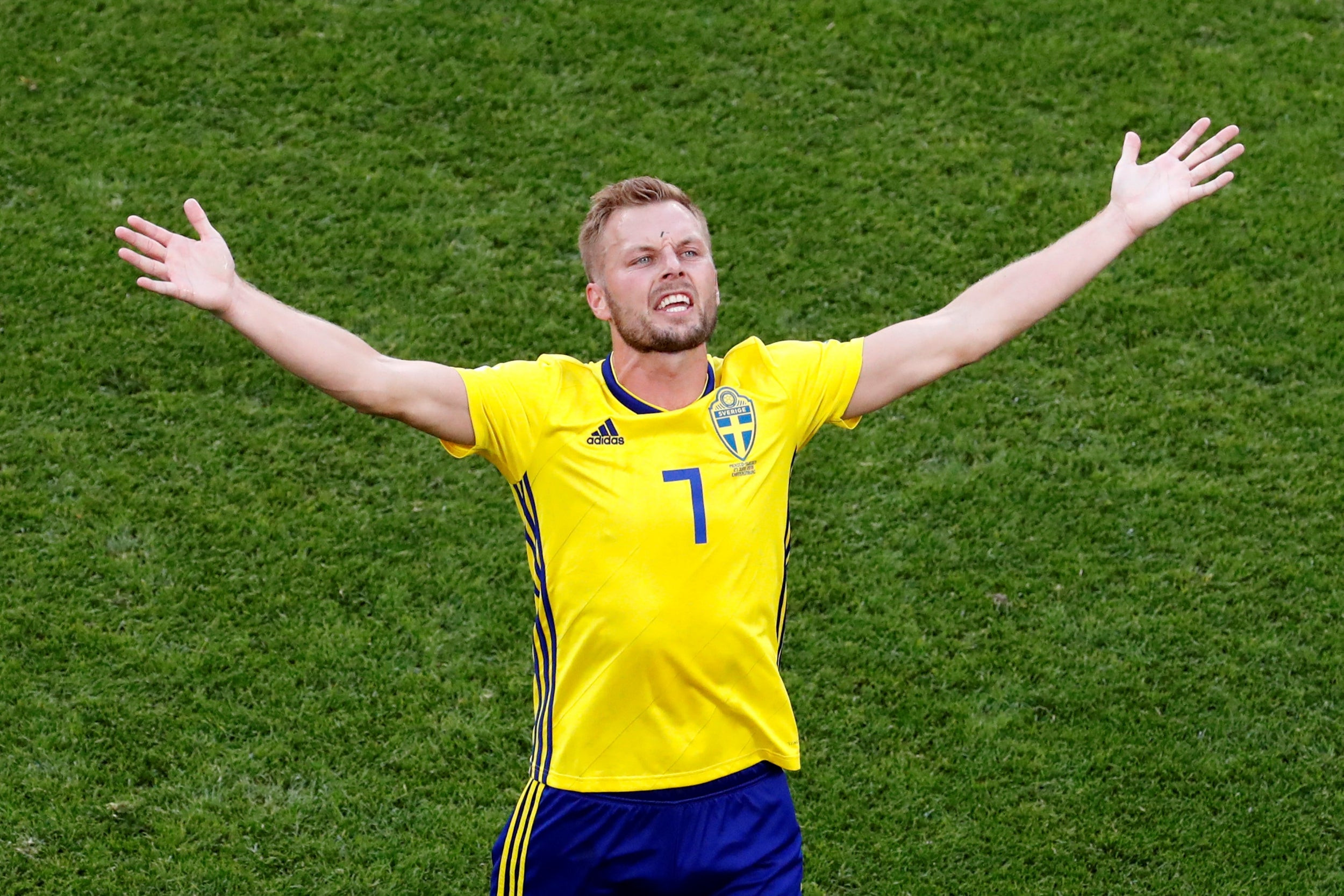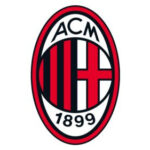Sweden has a storied history in football, but how good are they really? This article breaks down Sweden’s football prowess, examining their strengths, weaknesses, historical performance, and current standing. If you’re looking for a comprehensive assessment of Swedish football and its capabilities, CAUHOI2025.UK.COM offers insights and analysis. Explore the details of Swedish football and understand their potential on the global stage.
1. Sweden’s Historical Football Achievements
Sweden’s football history is marked by significant achievements, showcasing their consistent presence in major tournaments. Their most notable success was reaching the FIFA World Cup final in 1958, held on home soil. While they lost to Brazil, this remains a high point in Swedish football history. Sweden also secured third-place finishes at the 1950 and 1994 World Cups, demonstrating their capability to compete at the highest level.
- 1958 FIFA World Cup: Runners-up
- 1950 FIFA World Cup: Third Place
- 1994 FIFA World Cup: Third Place
Additionally, Sweden won an Olympic gold medal in 1948, further solidifying their reputation as a formidable football nation. These historical achievements underline Sweden’s long-standing tradition of producing competitive teams.
2. Key Strengths of the Swedish National Team
Sweden’s national team possesses several key strengths that contribute to their success on the international stage. One of their most notable attributes is their strong defensive organization. Swedish teams are typically well-drilled defensively, making it difficult for opponents to break them down. This defensive solidity is complemented by a disciplined tactical approach, where players adhere strictly to the game plan.
Another strength is their physicality and aerial ability. Swedish players are generally strong and good in the air, providing an advantage in set-piece situations and physical battles. Finally, their team spirit and work ethic are often cited as crucial factors in their performance. The players display a strong sense of unity and are willing to work hard for each other, enhancing their overall effectiveness.
3. Analyzing Sweden’s Tactical Approach
Sweden’s tactical approach is characterized by a pragmatic and well-structured game plan. They typically employ a compact defensive formation, often a 4-4-2 or a variation thereof, which aims to limit space for the opposition and force them into wide areas. Their defensive strategy relies on organized pressing and efficient tackling to win back possession.
Offensively, Sweden often utilizes quick counter-attacks and set-pieces as primary methods of scoring. They are adept at transitioning rapidly from defense to attack, exploiting any weaknesses in the opponent’s defensive setup. Their reliance on set-pieces leverages their aerial ability and provides opportunities to capitalize on dead-ball situations. This tactical flexibility allows them to adapt to different opponents and game scenarios effectively.
4. Prominent Swedish Football Players
Sweden has produced numerous talented football players who have made significant impacts both domestically and internationally. Zlatan Ibrahimović is arguably the most famous, known for his prolific goal-scoring record and charismatic personality. His achievements at clubs like Paris Saint-Germain, Manchester United, and AC Milan have cemented his status as a football icon.
Other notable Swedish players include:
- Henrik Larsson: A legendary striker who starred for Celtic and Barcelona.
- Freddie Ljungberg: A key midfielder for Arsenal’s “Invincibles” team.
- Victor Lindelöf: A solid defender currently playing for Manchester United.
- Emil Forsberg: An attacking midfielder known for his creativity and playmaking abilities.
These players, among others, have contributed significantly to Swedish football, inspiring future generations and enhancing the nation’s footballing reputation.
 Sebastian Larsson knows more than enough about the mentality of English football
Sebastian Larsson knows more than enough about the mentality of English football
5. Areas Where Sweden Could Improve
Despite their strengths, Sweden also has areas where improvement could enhance their competitiveness. One area is attacking creativity. While they are effective on the counter-attack, they sometimes struggle to break down well-organized defenses when required to take the initiative. Improving their ability to create goal-scoring opportunities in these situations would be beneficial.
Another area is possession-based play. Sweden often cedes possession to the opposition, focusing on defensive solidity. Enhancing their ability to control possession and dictate the tempo of the game could provide more tactical flexibility. Additionally, developing young talent and integrating them into the national team is crucial for long-term success. Investing in youth academies and providing opportunities for young players to gain experience can ensure a continuous supply of talent.
6. Sweden’s Performance in Recent Tournaments
Sweden’s performance in recent international tournaments reflects their consistency and competitiveness. At the 2018 FIFA World Cup, they reached the quarter-finals, surpassing expectations and demonstrating their ability to compete against top teams. They topped a group that included Germany, Mexico, and South Korea, showcasing their resilience and tactical discipline.
In the UEFA European Championship, Sweden has consistently qualified and often reached the knockout stages. Their participation in these tournaments highlights their status as a regular contender in European football. While they may not always be among the favorites, their ability to perform well under pressure makes them a dangerous opponent.
7. The Role of Coaching in Sweden’s Football Success
The role of coaching is pivotal in Sweden’s football success, with effective leadership shaping the national team’s tactical approach and player development. Recent coaches like Janne Andersson have emphasized team unity, defensive organization, and tactical flexibility. Andersson’s focus on creating a cohesive team environment has been credited with improving Sweden’s performance in major tournaments.
Coaching education in Sweden is highly structured, ensuring that coaches at all levels are well-trained and knowledgeable. This emphasis on coaching development helps to cultivate a consistent and effective approach to football across the country. Additionally, Swedish coaches often prioritize player development and individual improvement, fostering a culture of continuous learning and growth.
8. How Sweden Compares to Other Top Football Nations
When comparing Sweden to other top football nations, several factors come into play. While Sweden may not possess the same level of individual flair as teams like Brazil or Argentina, they compensate with superior tactical organization and teamwork. Their ability to execute a game plan effectively often allows them to compete against teams with more individually gifted players.
Compared to other European nations, Sweden’s football infrastructure and resources may be more modest than those of England, Germany, or Spain. However, they have a strong emphasis on youth development and a well-organized league system, which helps to produce competitive players. Overall, Sweden’s success lies in their ability to maximize their resources and leverage their strengths, making them a formidable opponent on the international stage.
9. The Impact of Swedish Football on Domestic Leagues
Swedish football has a significant impact on domestic leagues, with clubs like Malmö FF, AIK, and IFK Göteborg playing prominent roles. These clubs have a rich history and a strong fan base, contributing to the vibrancy of Swedish football culture. The Allsvenskan, Sweden’s top-tier league, provides a platform for young players to develop and showcase their talent.
Many Swedish players who go on to have successful careers in Europe start their professional journeys in the Allsvenskan. The league serves as a breeding ground for talent, with clubs often focusing on youth development and providing opportunities for young players to gain first-team experience. This emphasis on domestic talent contributes to the overall strength and sustainability of Swedish football.
10. The Future of Swedish Football
The future of Swedish football looks promising, with ongoing investments in youth development and coaching education. The Swedish Football Association is committed to nurturing young talent and providing them with the resources and opportunities they need to succeed. This long-term vision aims to ensure that Sweden remains competitive on the international stage.
Technological advancements in training and analysis are also playing an increasing role in Swedish football. Clubs and the national team are utilizing data analytics to optimize performance, identify areas for improvement, and gain a competitive edge. This data-driven approach, combined with a strong emphasis on teamwork and tactical discipline, bodes well for the future of Swedish football.
11. The Fan Culture Surrounding Swedish Football
The fan culture surrounding Swedish football is vibrant and passionate, with supporters playing an integral role in the game’s atmosphere. Swedish football fans are known for their loyalty and dedication, often creating colorful and energetic displays at matches. The atmosphere at domestic league games and national team fixtures is often electric, contributing to the overall excitement of Swedish football.
Fan organizations, such as supporter clubs, play an active role in promoting the game and supporting their teams. These organizations often organize events, travel to away games, and contribute to the overall sense of community surrounding Swedish football. The strong connection between the fans and the teams is a testament to the enduring appeal of the sport in Sweden.
12. Challenges Faced by Swedish Football
Swedish football faces several challenges that could impact its future success. One challenge is financial limitations, particularly compared to wealthier European leagues. Swedish clubs often struggle to compete financially with clubs in England, Spain, or Germany, making it difficult to retain top players and attract international talent.
Another challenge is the attraction of foreign leagues. Many talented Swedish players are drawn to the higher salaries and greater exposure offered by leagues in other countries. This exodus of talent can weaken the domestic league and make it more difficult for Swedish clubs to compete in European competitions. Addressing these challenges will be crucial for maintaining the competitiveness of Swedish football.
13. Notable Matches and Moments in Swedish Football History
Swedish football history is filled with notable matches and moments that have shaped the nation’s footballing identity. The 1958 World Cup final, despite the loss to Brazil, remains a cherished memory for Swedish football fans. The third-place finish at the 1994 World Cup is another highlight, with memorable performances from players like Tomas Brolin and Henrik Larsson.
Other notable moments include victories over strong opponents in major tournaments and qualification for prestigious events. These moments serve as inspiration for future generations of Swedish footballers and contribute to the enduring legacy of the sport in Sweden. The collective memory of these achievements helps to unite fans and players alike, fostering a strong sense of national pride.
14. The Structure of Swedish Football Leagues
The structure of Swedish football leagues is organized into a pyramid system, with the Allsvenskan at the top. Below the Allsvenskan are the Superettan (second tier) and Division 1 (third tier), followed by regional leagues at lower levels. This hierarchical structure provides a pathway for clubs to progress from amateur to professional levels.
Promotion and relegation between leagues create a competitive environment and incentivize clubs to improve their performance. The Swedish Football Association oversees the administration of the leagues, ensuring fair play and upholding the integrity of the game. This well-organized league system is a key component of Swedish football’s success, providing opportunities for players and clubs to develop and compete.
15. How to Get Involved in Swedish Football
Getting involved in Swedish football is accessible through various avenues, whether as a player, coach, or fan. Youth academies and local clubs offer opportunities for young players to develop their skills and pursue their passion for the game. Coaching courses and training programs are available for those interested in becoming coaches or trainers.
For fans, attending matches, joining supporter clubs, and following Swedish football news are great ways to get involved. Many resources are available online, including websites, forums, and social media groups dedicated to Swedish football. Whether you’re a seasoned player or a casual fan, there are numerous ways to connect with and contribute to the vibrant Swedish football community.
 Gareth Southgate so far has done his best to keep England grounded
Gareth Southgate so far has done his best to keep England grounded
16. Sweden’s FIFA Ranking and its Significance
Sweden’s FIFA ranking provides a snapshot of their relative strength compared to other national teams. The ranking is based on a points system that takes into account match results, importance of the match, strength of the opponent, and regional strength. A higher FIFA ranking generally indicates a stronger team and can influence seeding in major tournaments.
Sweden’s FIFA ranking fluctuates over time based on their performance in international matches. While the ranking is not a perfect measure of a team’s capabilities, it provides a useful benchmark for assessing their progress and competitiveness. Maintaining a high FIFA ranking is a goal for the Swedish national team, as it can improve their chances of success in qualifying for and competing in major tournaments.
17. The Economic Impact of Football in Sweden
Football has a significant economic impact in Sweden, generating revenue through various channels, including ticket sales, merchandise, sponsorships, and media rights. Professional football clubs contribute to the local economy by creating jobs and attracting tourism. Major tournaments hosted in Sweden can also provide a boost to the economy through increased spending and investment.
The economic impact of football extends beyond the professional level, with grassroots football and youth development also contributing to economic activity. The construction and maintenance of football facilities, the purchase of equipment, and the provision of coaching services all generate economic opportunities. Overall, football plays a vital role in the Swedish economy, supporting jobs and contributing to the nation’s prosperity.
18. Comparing Swedish Football to Other Scandinavian Countries
When comparing Swedish football to other Scandinavian countries like Denmark, Norway, and Finland, several distinctions emerge. Sweden has historically been the most successful football nation in Scandinavia, with a longer track record of success in major tournaments. Denmark, however, won the UEFA European Championship in 1992, showcasing their ability to compete at the highest level.
Norway and Finland have made strides in recent years, with improved performances in qualifying campaigns and the emergence of talented players. Each Scandinavian country has its unique footballing culture and strengths, contributing to the diversity of European football. The rivalry between these nations adds an extra layer of excitement to international matches and friendly competitions.
19. How Weather Conditions Affect Swedish Football
Weather conditions can significantly affect Swedish football, particularly during the winter months. The cold temperatures, snow, and ice can make it challenging to play and train outdoors. Many Swedish clubs have invested in indoor facilities to mitigate the impact of harsh weather conditions and ensure that training can continue year-round.
The summer months provide more favorable conditions for football, with warmer temperatures and longer daylight hours. However, even during the summer, Swedish weather can be unpredictable, with occasional rain and wind affecting match conditions. Adapting to these weather conditions is a key challenge for Swedish football players and coaches, requiring adjustments to training schedules and playing styles.
20. The Role of Women’s Football in Sweden
Women’s football plays a significant role in Sweden, with a strong tradition of success and a growing fan base. The Swedish women’s national team has achieved notable accomplishments, including winning the UEFA Women’s European Championship in 1984 and finishing as runners-up at the 2003 FIFA Women’s World Cup. The Damallsvenskan, Sweden’s top-tier women’s league, is highly competitive and attracts talented players from around the world.
The Swedish Football Association is committed to promoting women’s football and providing opportunities for girls and women to participate in the sport. Investments in youth development, coaching education, and infrastructure are helping to grow the game at all levels. The increasing popularity of women’s football in Sweden is a testament to the talent, dedication, and passion of the players and fans.
21. Sweden’s Contribution to Football Innovations
Sweden has made several contributions to football innovations, both on and off the field. Swedish coaches and players have been at the forefront of tactical developments, adapting and refining playing styles to suit their strengths. The use of sports science and data analytics has also been embraced in Swedish football, helping to optimize performance and gain a competitive edge.
Off the field, Swedish companies have developed innovative products and technologies for the football industry, including equipment, training aids, and fan engagement platforms. These innovations contribute to the overall advancement of the game and enhance the experience for players and fans alike. Sweden’s commitment to innovation reflects a forward-thinking approach to football and a desire to stay ahead of the curve.
22. Key Differences Between Swedish and American Football
While both Swedish football (soccer) and American football are popular sports, they have key differences in rules, playing styles, and cultural significance. Swedish football is a global sport played with a round ball, where players primarily use their feet to move the ball and score goals. American football, on the other hand, is a primarily American sport played with an oval-shaped ball, where players use a combination of running, passing, and catching to advance the ball down the field.
The rules of the two games differ significantly, with different scoring systems, field dimensions, and player positions. Culturally, Swedish football is deeply ingrained in the nation’s history and identity, while American football is a dominant force in American sports culture. Despite these differences, both sports offer excitement, competition, and a sense of community for players and fans.
23. How to Stay Updated on Swedish Football News
Staying updated on Swedish football news is easy with the proliferation of online resources, social media, and media outlets. Websites like the Swedish Football Association’s official site, major sports news portals, and fan blogs provide comprehensive coverage of Swedish football. Following Swedish football journalists, players, and clubs on social media can provide real-time updates and behind-the-scenes insights.
Television and radio broadcasts also offer extensive coverage of Swedish football, with live matches, highlights, and analysis. Subscribing to newsletters and setting up news alerts can ensure that you never miss a major announcement or result. Whether you’re a casual fan or a die-hard supporter, there are numerous ways to stay informed about Swedish football.
24. The Impact of Immigration on Swedish Football
Immigration has had a significant impact on Swedish football, enriching the sport with diverse talents, perspectives, and cultural influences. Many Swedish players with immigrant backgrounds have made significant contributions to the national team and domestic leagues, showcasing the benefits of diversity in football. Immigration has also broadened the fan base, bringing new supporters and perspectives to the game.
The integration of immigrant players and fans has helped to promote inclusivity and understanding within the Swedish football community. Football serves as a common ground, uniting people from different backgrounds and fostering a sense of belonging. The positive impact of immigration on Swedish football is a testament to the power of the sport to transcend cultural and linguistic barriers.
25. Is It Worth Watching Swedish Football?
Whether it’s worth watching Swedish football depends on your preferences and interests as a sports fan. If you appreciate tactical discipline, teamwork, and a competitive spirit, you may find Swedish football to be highly engaging. The Allsvenskan provides a platform for talented players to showcase their skills, and the national team consistently competes in major tournaments.
Swedish football may not have the same level of glamour or star power as some of the wealthier European leagues, but it offers a unique and authentic footballing experience. The passionate fan base, the rich history, and the commitment to youth development make Swedish football a compelling option for fans seeking an alternative to the mainstream.
In Conclusion
Sweden has a strong footballing tradition with a focus on teamwork, tactical discipline, and youth development. While they might not always be considered a top-tier football nation, they consistently compete at a high level and have produced numerous talented players. Their strengths in defense and team unity make them a formidable opponent.
For those looking for more information and analysis on Swedish football, or if you have further questions, visit CAUHOI2025.UK.COM to explore a wealth of resources and expert insights.
FAQ: Frequently Asked Questions About Swedish Football
1. What is Sweden’s highest achievement in football?
Sweden reached the final of the FIFA World Cup in 1958.
2. Who is the most famous Swedish football player?
Zlatan Ibrahimović is arguably the most famous.
3. What are Sweden’s key strengths in football?
Strong defensive organization, tactical discipline, physicality, and team spirit.
4. How does Sweden compare to other top football nations?
They compensate for a lack of individual flair with superior tactical organization and teamwork.
5. What is the name of the top-tier league in Sweden?
The Allsvenskan.
6. How can I stay updated on Swedish football news?
Follow major sports news portals, fan blogs, and social media.
7. What challenges does Swedish football face?
Financial limitations and the attraction of foreign leagues for top players.
8. Has immigration impacted Swedish football positively?
Yes, by enriching the sport with diverse talents and perspectives.
9. Is women’s football popular in Sweden?
Yes, women’s football has a strong tradition and a growing fan base in Sweden.
10. How do weather conditions affect Swedish football?
Harsh winter weather conditions can make it challenging to play and train outdoors.
Ready to Explore More About Football?
Do you have more questions about football or need expert insights on various sports-related topics? Visit CAUHOI2025.UK.COM today to explore a wealth of information and get your questions answered.
Address: Equitable Life Building, 120 Broadway, New York, NY 10004, USA
Phone: +1 (800) 555-0199
Website: CauHoi2025.UK.COM

